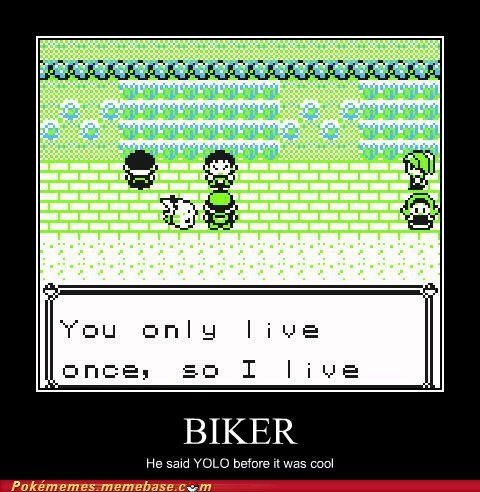Intro
We’ve wrapped up
pretty much everything there is to know about competitive battling. I’m 100%
sure I missed something important, but now it’s time to learn some important tactics
for the battle field. Competitive battling is like chess; you want to stay
several moves ahead of the opponent. I may not be a good team builder, but I
love to strategize.
 |
| See even the evil organizations had strategies, it just so happened that their plans were foiled by the likes of children |
Strategizing might
be hard to explain because it’s one of the things you learn better from
experience, but I’ll do my best to try and explain it.
Be sure to check
out previous post if you find yourself confuzzled: http://pokeswerve.blogspot.com/
Choosing
Your Lead
The first
Pokemon you choose to lead with is essential. If you can figure out what
Pokemon your opponent is going to lead with you can easily counter them; there’s
a Team Preview before the battle, so each trainer knows what Pokemon the other
trainer has. Common leads include Pokemon that sets up Entry
Hazards and fast Pokemon with moves like U-Turn or Volt Switch,
which can be referred to as Scouts.
 |
| Sorry no pictures of any of those leads, I don't like them plus their pictures are in their links :P |
·
Cloyster – Early game sweeper
·
Victini – U-Turner
·
Galvantula – Focus Sashed to ensure
Sticky Web
·
Ninjask – Baton Pass user
Things to consider when
you’re choosing a lead:
·
Look for a Pokemon that can set up Entry
Hazards on your opponent’s team
·
Check to see if they have a
Spinner/Defogger in case you want to get up your Entry Hazards
o
That tells you if you want to get your
Entry Hazards up sooner or later
·
A good stop to leads with Hazards is using
a Pokemon with Taunt, this prevents the use of any non-attacking move
 |
| Serperior is a lead I like to use because it's fast, and it can learn Taunt and Dual Screens (Light Screen and Reflect) |
o
If you’re unsure of what your opponent will
lead with, it might be a good idea to check it out and switch out
Example of choosing a
lead:
·
I like to lead with my Swampert, to put
up Hazards, and sometimes trainers predict that and counter with a Grass-Type
Pokemon or one that knows a Grass-Type move.
o
They predicted me to lead with Swampert,
and now I’m forced to switch out because Swampert is 4x weak to Grass.
 |
| It wouldn't be a good post without my boy Kippert |
Switching
Switching is one
of the most important parts of a battle. Unlike a normal play through of a Pokemon
game, trainers in competitive battles switch their Pokemon, a lot. Also if you’re
used to the Shift
Battle Style you can forget about that because all
competitive battles are on the Set Battle Style, meaning you can’t switch out
after you faint an opponent’s Pokemon.
Switching is all
about the type matchup. Your Grass-Type Pokemon isn’t going to want to stay in
on a Fire-Type Pokemon, well unless you know it’s not going to faint.
·
Trainers will normally switch into a
Pokemon that has a type advantage over your Pokemon, or a Pokemon that may not
have the type advantage but some way to deal with your Pokemon.
o
One reason a trainer may switch into
your Pokemon with a Pokemon that has a disadvantage is if they’re Sacrificing
it; meaning that don’t need it anymore.
·
Having Pokemon with a diverse move pool is
very beneficial. This way you’re able to do more damage to a wider range of
Pokemon.
Risk
vs. Reward
This is a big
part of competitive battling. When battling you want to get inside your
opponent’s head by picking up on their tendencies. After picking up on their
tendencies you’ll want to try and predict what they’re going to do next. That
can either be a good thing, where you’re right, or a bad thing, where you’re
wrong.
A lot of the
times I’ll go for the risk, YOLO, and more times than not I get the short end
of the stick. But once the risk pays becomes a reward, oh boy, does that feel
amazing!

Wrap
Up
For me the
biggest part of learning strategy is through experience. Once you’ve had more
battles you start picking up on things. And I’ll tell you, SOME PEOPLE ARE NOT
ORIGINAL! You’ll most likely be seeing similar things on people teams, so
you’ll eventually/hopefully figure out a way to stop them. It’s not like it’s the
end of the world is you lose; I’ve lost my fair share of battles and I keep going
(mostly out of boredom because I’ve started to hate competitive battling, but
that’s a story for another time).



No comments:
Post a Comment